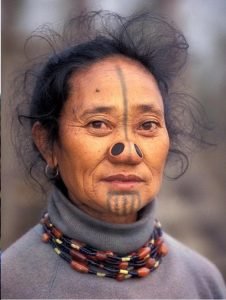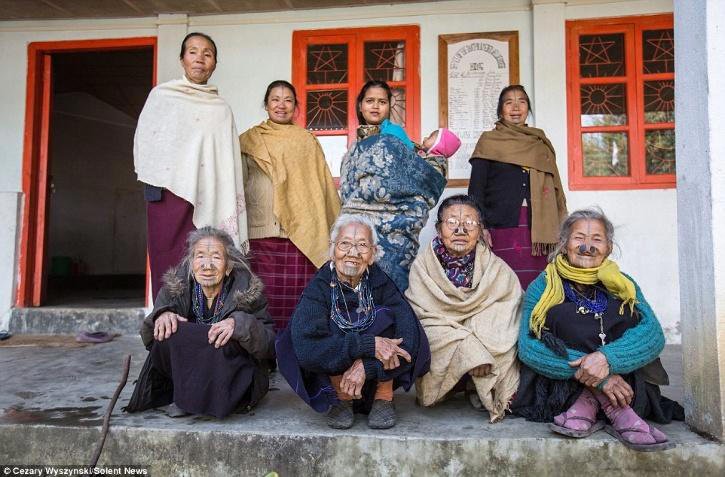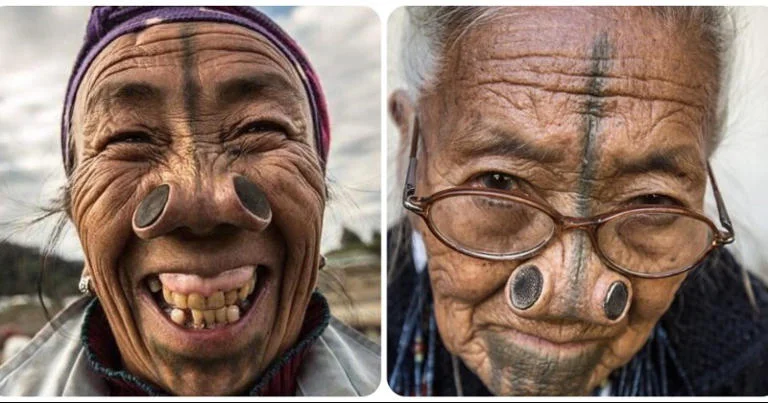Blocked with large black nose plugs with vertical lines tattooed on their faces and nostrils, the women of the Apatani tribe are anything but ordinary.
A strange sense of ‘beauty’?
The Apatani tribe is settled in the Ziro Valley of Arunachal Pradesh. The women of the tribe are especially distinct – the reason for this being their tippy and yapping hulls.

Apatani women have a tattoo on their face – called tippi, made of a mixture of pig fat and soot from the chimney. It is drawn on the face with the help of a thorny plant. The thorn is placed on the skin and then struck with a small hammer until the face is inked.
The typical tattoo pattern consists of a black line that crosses a woman’s face from the center of her forehead down to the tip of her nose, and five other lines connecting the lower lip to the chin.

Another distinguishing feature is their yapping hulo, which are wooden plugs inserted into their nostrils by Apatani women to enlarge them. The wooden plugs are brought from the forest and sterilized in a fire before use.
Technically, these plugs were not inserted into the nostrils, but were pierced on each side of the nose. But these features, now identified with the tribe, did not begin as specific beauty standards.
a deep root
In the Ziro Valley, the Apatani tribe co-existed with several other tribes. Apatani women were known as the greatest beauties among them all. So, men from other tribes – ‘tribal raiders’ – began kidnapping them and forcibly marrying them.
Facial tattoos and nose plugs were thus introduced to prevent kidnapping and were not beauty standards in themselves, but were instead intended to cover up beauty and make women unattractive to tribal raiders.
Her face was marked, and her nose pierced, on the day an Apatani woman reached puberty and had her first period.
Today’s Trend – Discrimination and Stigma
In the early 1970s, the Indian government banned nose plugs. It was said that they made Apatani women easily recognizable and therefore, subjected to discrimination.

A study by researchers at IIT Guwahati suggests that stigma along with innovation and modernization have played a role in eroding this tradition.
As a result, today, most women who are left with attractive facial features are now in their later years.
